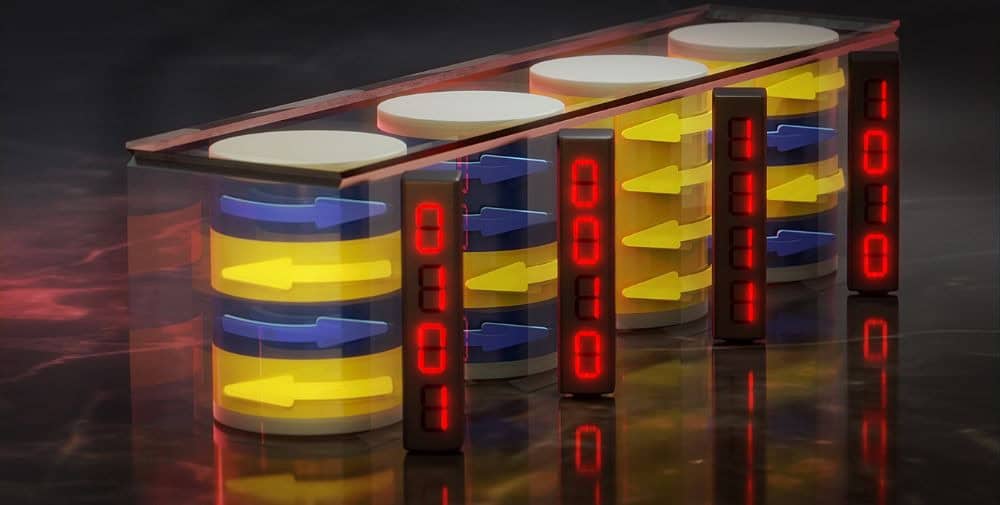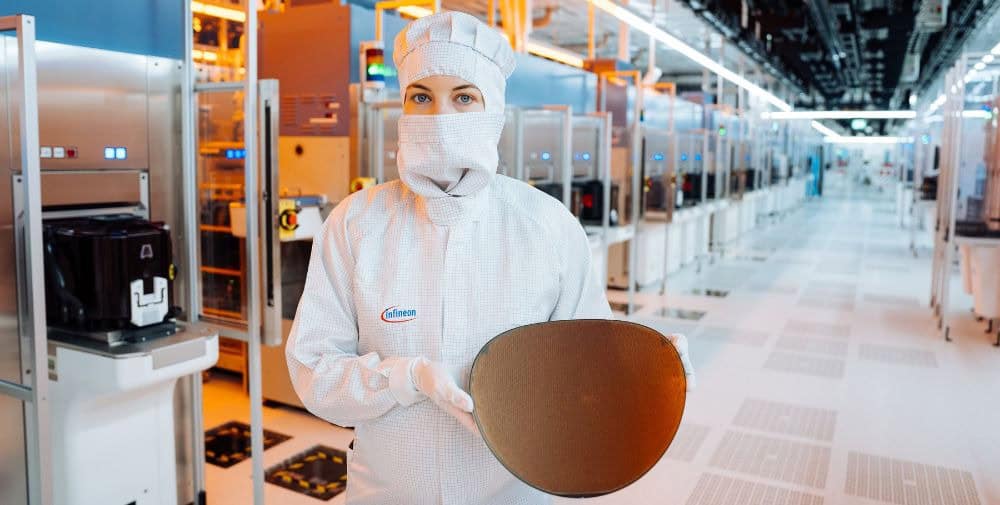“A cylindrical domain, which we physicists also call a ‘bubble domain’, is a tiny, cylindrical area in a thin magnetic layer. This area has a special orientation of its spins, i.e. the intrinsic angular momentum of the electrons that generate the magnetic moment in the material. As a result, we have a magnetization there that differs from the rest of the environment. You can also imagine it as a small, magnetic bubble in the shape of a cylinder that floats in a sea with oppositely oriented magnetization,” says Prof. Olav Hellwig from the HZDR Institute of Ion Beam Physics and Materials Research, describing the research object in which his team believes there is great potential for spintronic applications.
Domain walls, i.e. boundary areas in which the orientation of the magnetization changes, are created at the edges of this cylindrical domain. For the magnetic storage technology Hellwig’s team is aiming for, it is crucial to precisely control the spin structure in the domain wall, as its clockwise or counterclockwise orientation can be used directly to encode bits. The researchers are also focusing on another aspect: “Current hard disks with track widths of 30 to 40 nanometers and bit lengths of 15 to 20 nanometers can accommodate around one terabyte on the surface of a standard postage stamp. To overcome this data density limitation, we are working on extending storage into three dimensions,” explains Hellwig.
A way out: metamaterials in 3D
In order to control the internal spin structure of the domain walls, magnetic multilayer structures are attractive, as the magnetic energies in play can be adjusted accordingly through the interaction of different materials and layer thicknesses.
On silicon wafers, Hellwig’s team has applied blocks of alternating layers of cobalt and platinum, separated by layers of ruthenium. The resulting metamaterial is a so-called synthetic antiferromagnet. What makes these so special is their vertical magnetization structure, in which layer blocks on top of each other have an opposite magnetization direction, which leads to an overall neutral magnetization.
“This is where the concept of the so-called racetrack memory comes into play. This is a system that can be imagined as a car racetrack, along which the bits are arranged like a string of pearls. The highlight: in our system, we can specifically control the thickness of the layers and therefore the magnetic properties. This allows us to adapt the magnetic behaviour of the synthetic antiferromagnet in such a way that not only individual bits, but entire bit sequences can be stored, in the form of a depth-dependent magnetization direction of the domain walls,” explains Hellwig. In the future, it should be possible to transport such multi-bit cylindrical domains along these magnetic data highways in a controlled, fast and energy-efficient manner.
Other applications in magnetoelectronics are also conceivable. For example, they can be used in magnetoresistive sensors or in spintronic components. In addition, such complex magnetic nano-objects have great potential for the magnetic implementation of neural networks that could process data along the lines of the human brain.
Publication
R. Salikhov, F. Samad, S. Schneider, D. Pohl, B. Rellinghaus, B. Böhm, R. Ehrler, J. Lindner, N. S. Kiselev, O. Hellwig: Multilayer Metamaterials with Ferromagnetic Domains Separated by Antiferromagnetic Domain Walls, in Advanced Electronic Materials, 2024 (DOI: 10.1002/aelm.202400251)
Contact
Prof. Olav Hellwig
Group leader Magnetic Functional Materials
Institute of Ion Beam Physics and Materials Research at HZDR
Tel.: +49 351 260 2461
Email: o.hellwig@hzdr.de
– – – – –
Further links
👉 www.hzdr.de
Photo: B. Schröder/HZDR



